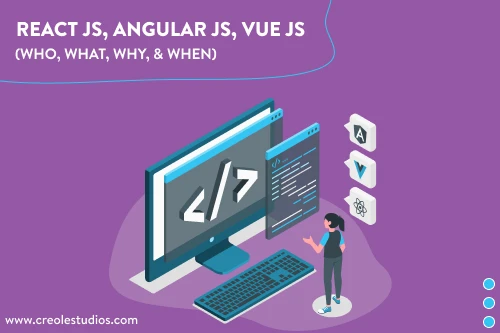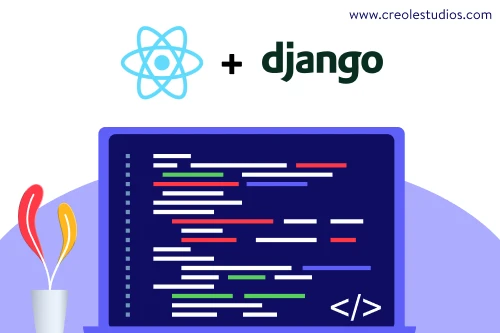Quick Summary
NodeJS WebSocket is a powerful technology that enables real-time, bidirectional communication between clients and servers. It is widely used in applications requiring instant data exchange, such as chat applications, online gaming, financial trading platforms, and collaborative tools. This article explores the key benefits of using NodeJS WebSocket for building scalable real-time applications.
Introduction
Businesses and developers constantly seek solutions that enable seamless and instant communication. Traditional HTTP requests and polling methods often introduce latency and increase server load, making them inefficient for real-time applications.
According to the 2022 Survey in the Web Framework and Technology category, NodeJS held a 47.12% market share, making it the most popular web technology.
Leveraging this, businesses can hire NodeJS developers to implement WebSocket as a robust solution, enabling low-latency, full-duplex communication.
This article explores the benefits of using NodeJS WebSocket and why it is a preferred choice for developers.
What is NodeJS WebSocket?
WebSocket is a communication protocol that provides full-duplex, bidirectional communication over a single TCP connection. Unlike HTTP, which follows a request-response model, WebSocket enables continuous data exchange without the need to repeatedly open and close connections. NodeJS, a lightweight and scalable JavaScript runtime, pairs exceptionally well with WebSocket, allowing developers to build high-performance real-time applications effortlessly.
Key Features of NodeJS WebSocket:
- Full-Duplex Communication – Both the client and server can send and receive messages simultaneously.
- Persistent Connection – A WebSocket connection remains open, reducing the overhead of frequent HTTP requests.
- Low Latency – Because it eliminates the need for repeated HTTP handshakes, WebSocket is ideal for real-time applications.
- Event-Driven Model – Using WebSockets in Node.js leverages its non-blocking, asynchronous nature, making it efficient for handling multiple connections.
Quick Comparison: Node JS vs JavaScript
Top 9 Benefits of Using NodeJS WebSocket
WebSockets enable real-time, bidirectional communication in modern web apps. Built on a non-blocking, event-driven NodeJS architecture, Node.js efficiently handles WebSockets. Here are 9 key benefits of using NodeJS WebSocket:
1. Real-Time Bidirectional Communication
- WebSocket allows full-duplex communication, meaning the server and client can send and receive messages simultaneously.
- This is crucial for applications requiring instant updates, such as chat apps, live sports updates, stock trading platforms, and multiplayer games.
- Unlike HTTP, where the client must initiate a request, WebSocket enables servers to push data as soon as it’s available.
2. Efficient and Low-Latency Data Transmission
- WebSocket connections remain open, eliminating the overhead of repeatedly establishing and tearing down connections like in HTTP.
- It reduces network congestion, providing faster response times with minimal delay.
- This makes Node.js WebSocket ideal for real-time applications that demand low-latency interactions, such as video streaming or online gaming.
3. Lightweight and Low Bandwidth Usage
- Unlike traditional HTTP polling, which continuously sends requests at intervals, WebSocket reduces unnecessary data exchange.
- Only essential data is transmitted, saving bandwidth and improving application performance.
- This is beneficial for large-scale applications and users with limited internet resources.
Quick Look: Build a Powerful Node.js Website Scraper with Playwright
4. Scalability with Node.js’ Event-Driven Architecture
- Node.js’ event-driven, non-blocking architecture ensures WebSocket can handle multiple simultaneous connections efficiently.
- This makes it possible to scale applications for thousands or even millions of concurrent users.
- It’s particularly useful for SaaS platforms, collaborative tools, and cloud-based applications where scalability is critical.
5. Persistent Connection for Seamless Experience
- Unlike traditional HTTP, where each request opens and closes a connection, WebSocket keeps the connection open.
- This ensures seamless communication without interruptions, improving the user experience in real-time applications.
- Users don’t experience lags or delays when interacting with the platform.
6. Support for Multiple Data Formats
- WebSocket can handle different data formats, including JSON, XML, plain text, and binary data.
- This flexibility is beneficial for applications that need to transmit multimedia, IoT sensor data, or financial transactions.
- Developers can optimize data transmission based on application requirements.
7. Better Resource Utilization
- WebSocket reduces server load by maintaining persistent connections instead of handling repeated requests.
- It improves CPU and memory utilization, allowing servers to handle more requests with fewer resources.
- This cost-effectiveness is valuable for startups and enterprises looking to optimize their infrastructure.
8. Enhanced Security with WebSocket Secure (WSS)
- WebSocket supports WSS (WebSocket Secure), ensuring encrypted communication over TLS/SSL.
- It prevents security vulnerabilities like man-in-the-middle (MITM) attacks and eavesdropping.
- Combined with authentication techniques, WebSocket ensures secure data transfer in sensitive applications like banking and healthcare.
9. Easy Integration with Modern Web Technologies
- WebSocket in Node.js integrates seamlessly with popular frameworks like Express, Nest.js, and Fastify.
- It is compatible with front-end technologies such as React, Vue.js, and Angular, making it easy to build real-time applications.
- Developers can use WebSocket libraries like ws and Socket.io for quick and efficient implementation.
Conclusion
NodeJS WebSocket revolutionizes real-time application development by providing efficient, low-latency, and scalable communication solutions. Whether you are building chat apps, live-streaming platforms, collaborative tools, or financial applications, leveraging WebSocket in a NodeJS environment ensures optimal performance and user engagement. To maximize the potential of WebSocket technology, it’s essential to hire NodeJS developers who can implement robust, real-time solutions tailored to your business needs. Embracing WebSocket technology will keep your applications future-ready in an increasingly real-time digital landscape.
FAQs on NodeJS WebSocket
1. How to use WebSockets in NodeJS?
Ans: You can use the ws library to implement WebSockets in Node.js. Install it using npm install ws, then create a WebSocket server using const WebSocket = require(‘ws’); const wss = new WebSocket.Server({ port: 8080 }); and handle connections with wss.on(‘connection’, ws => { ws.on(‘message’, message => { console.log(message); }); });.
2. Is NodeJS good for WebSockets?
Ans: Yes, Node.js is well-suited for WebSockets due to its event-driven, non-blocking architecture, making it efficient for handling multiple concurrent WebSocket connections with minimal resource usage.
3. Is WebSocket better than REST API?
Ans: WebSockets are better than REST APIs for real-time, bidirectional communication (e.g., chat apps, live updates), while REST APIs are better for stateless, request-response interactions like retrieving static data.
4. What is the difference between NodeJS WebSocket and Socket.io?
Ans: The ws library provides a raw WebSocket implementation, whereas socket.io is a higher-level library that builds on WebSockets and includes features like automatic reconnections, broadcasting, and fallback to other protocols.
5. What is the difference between WebSocket and HTTP?
Ans: HTTP is a stateless, request-response protocol, while WebSocket provides a persistent, full-duplex connection for real-time data exchange, reducing overhead and latency for continuous communication.
6. Can WebSocket work with mobile applications?
Ans: Yes, WebSockets work with mobile applications and are commonly used in real-time apps like chat, gaming, and live notifications, providing efficient and low-latency communication.
7. Does WebSocket require additional server resources?
Ans: Yes, WebSockets require more server resources than REST APIs as they maintain persistent connections, but they are optimized for handling many concurrent connections efficiently.
8. Which industries benefit the most from WebSocket?
Ans: Industries like finance (real-time stock trading), gaming (multiplayer interactions), messaging (chat apps), IoT (device communication), and collaboration tools (live document editing) benefit the most from WebSockets due to their real-time capabilities.
9. React vs Node JS – What’s the Difference?
Ans: React vs Node JS differ in purpose—React is a front-end library for building user interfaces, while Node.js is a runtime for executing JavaScript on the server side.











 30 mins free Consulting
30 mins free Consulting 
 10 min read
10 min read 







 Love we get from the world
Love we get from the world 